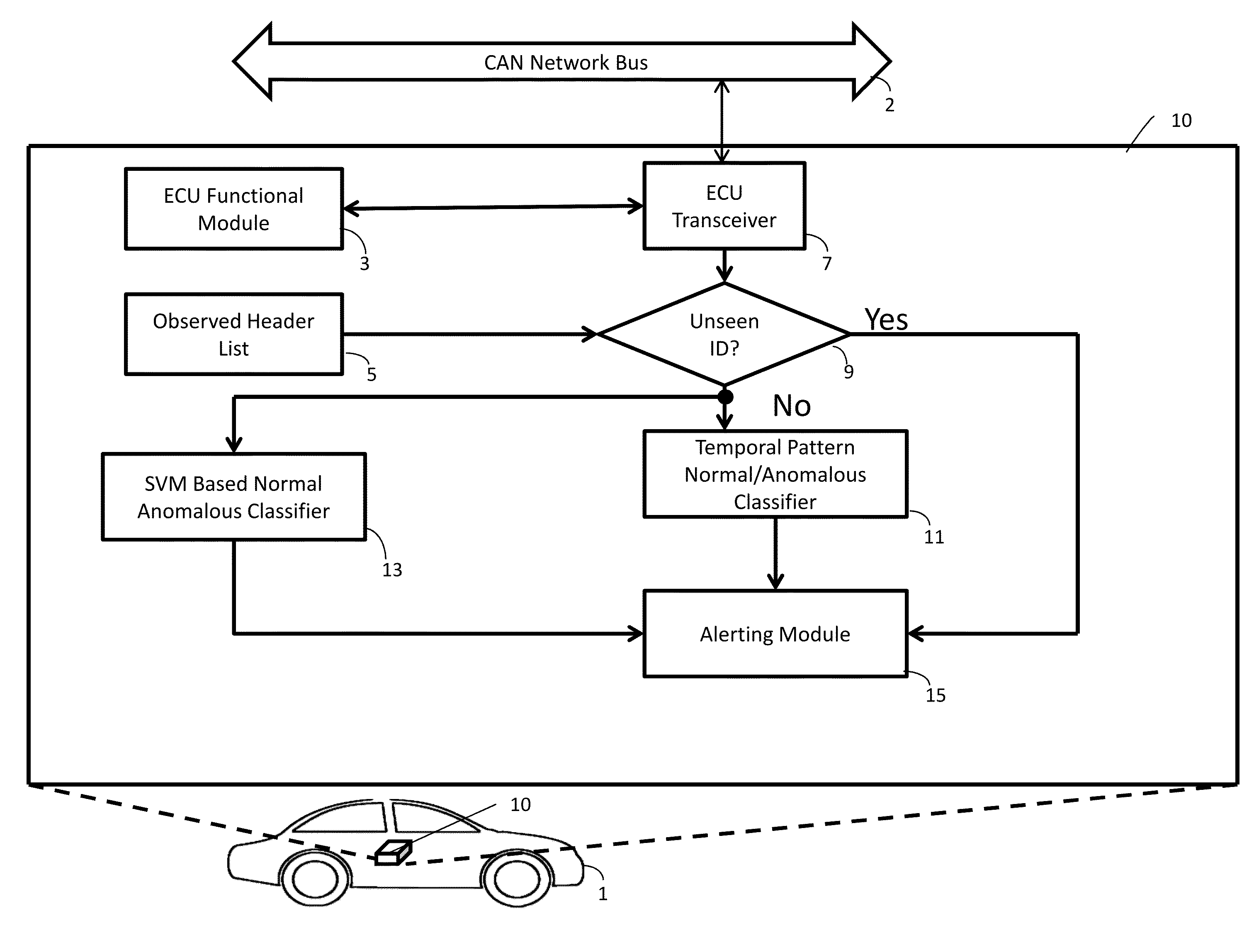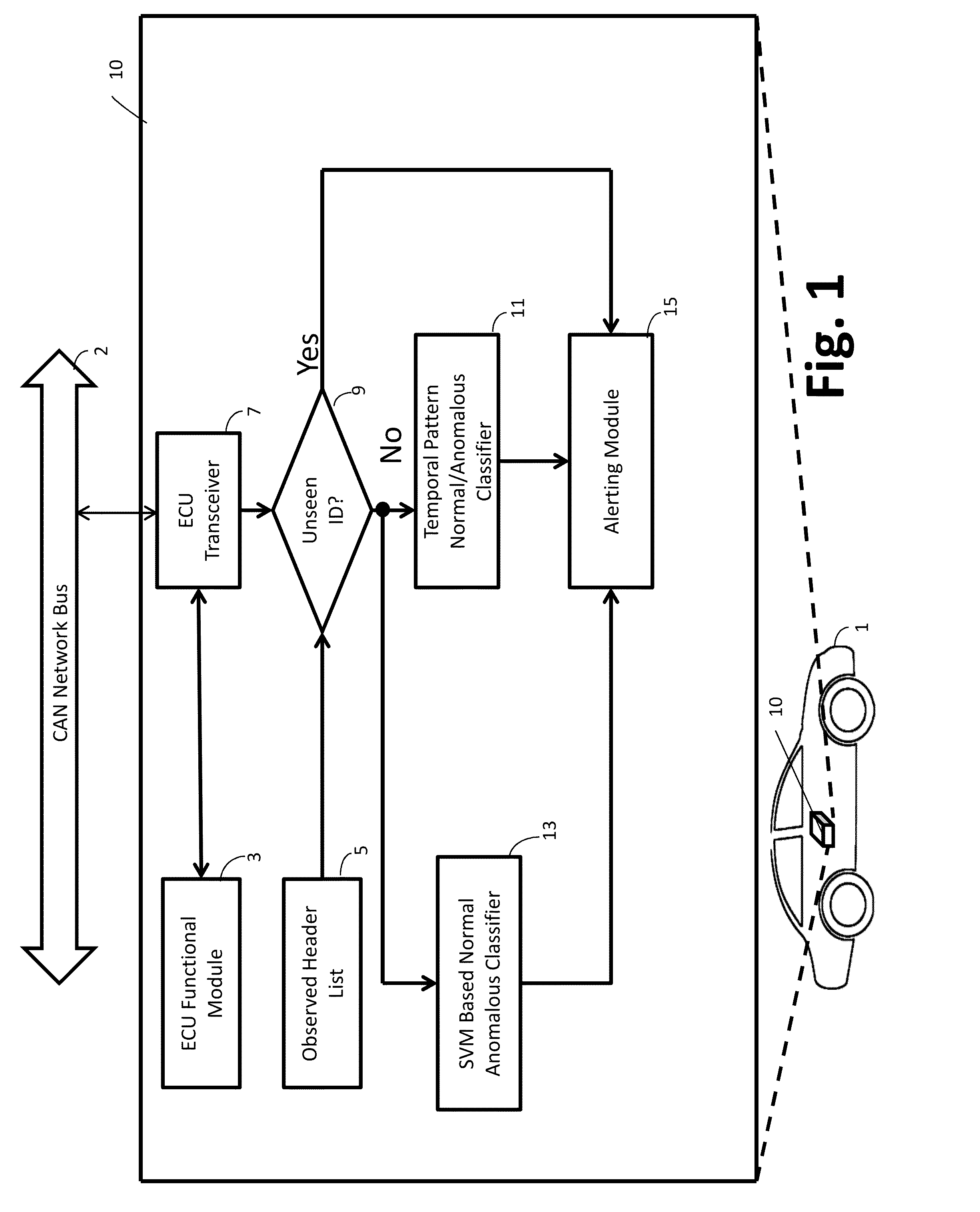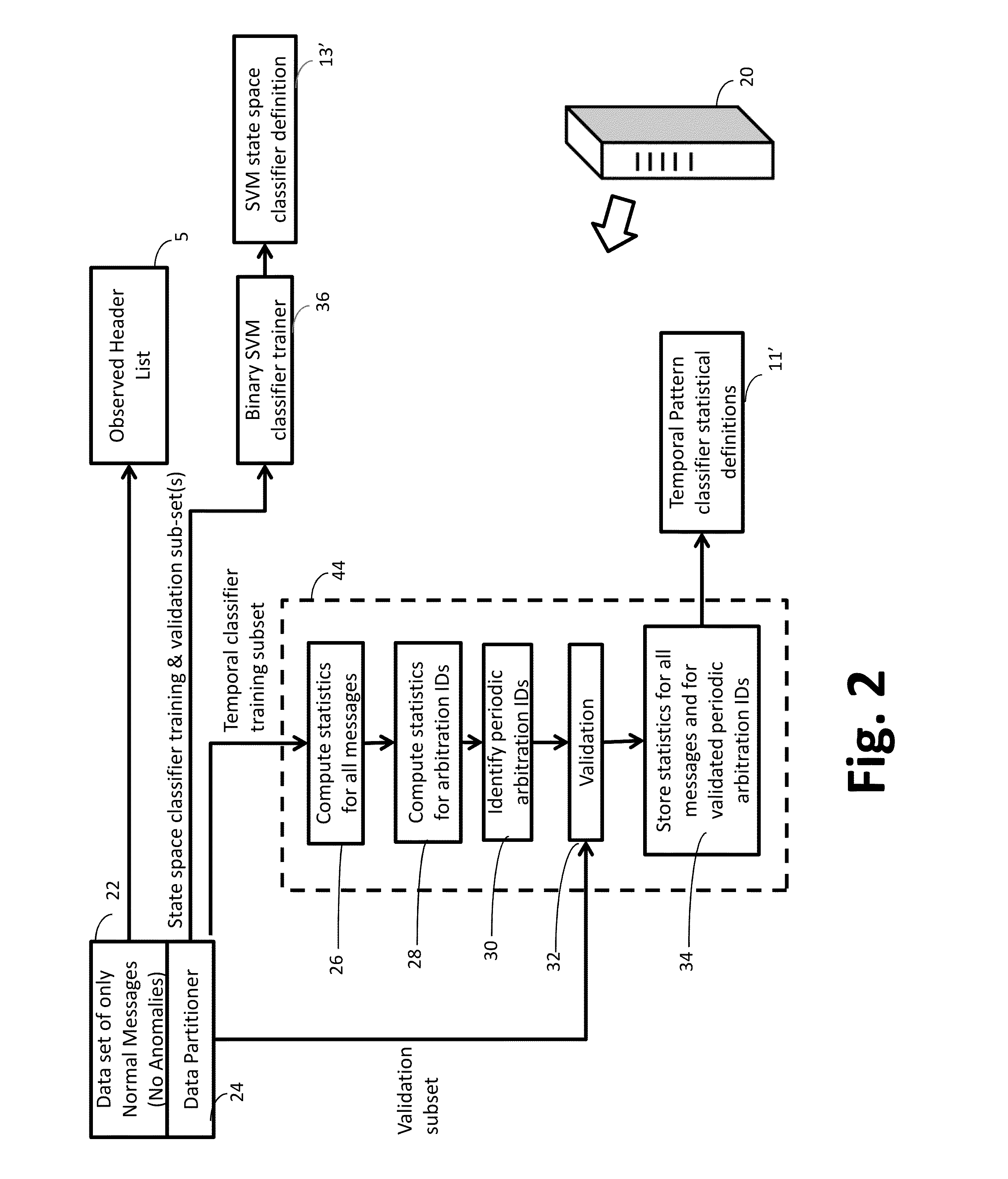Temporal anomaly detection on automotive networks
a technology of automotive networks and anomalies, applied in the field of machine classification arts, embedded system arts, automotive network analysis arts, can solve problems such as minor consequences of unintentional glitches or intentional hacks
- Summary
- Abstract
- Description
- Claims
- Application Information
AI Technical Summary
Benefits of technology
Problems solved by technology
Method used
Image
Examples
Embodiment Construction
[0012]An approach to CAN bus security in the face of “zero knowledge” context is zero-knowledge anomaly detection. In a rough conceptual sense, an anomaly is either a glitch or an intrusion (e.g. hacking)—more generally, CAN bus traffic that should not be present. In the CAN bus context, a priori knowledge of what types of messages may be transmitted by a given ECU may be limited (e.g., due to traffic introduced by aftermarket components connected with the CAN bus).
[0013]As used herein, an anomaly is defined as follows: an anomaly is a statistically significant deviation from normal CAN bus behavior as gleamed from CAN bus message traffic. “Statistically significant” means that the deviation from normal CAN bus behavior is sufficient, measureable and greater than the allowable limit. An anomaly detection system can be constructed based on statistical analysis of a training data set consisting of CAN bus traffic acquired from a vehicle known to be operating normally. For example, tra...
PUM
 Login to View More
Login to View More Abstract
Description
Claims
Application Information
 Login to View More
Login to View More - R&D
- Intellectual Property
- Life Sciences
- Materials
- Tech Scout
- Unparalleled Data Quality
- Higher Quality Content
- 60% Fewer Hallucinations
Browse by: Latest US Patents, China's latest patents, Technical Efficacy Thesaurus, Application Domain, Technology Topic, Popular Technical Reports.
© 2025 PatSnap. All rights reserved.Legal|Privacy policy|Modern Slavery Act Transparency Statement|Sitemap|About US| Contact US: help@patsnap.com



